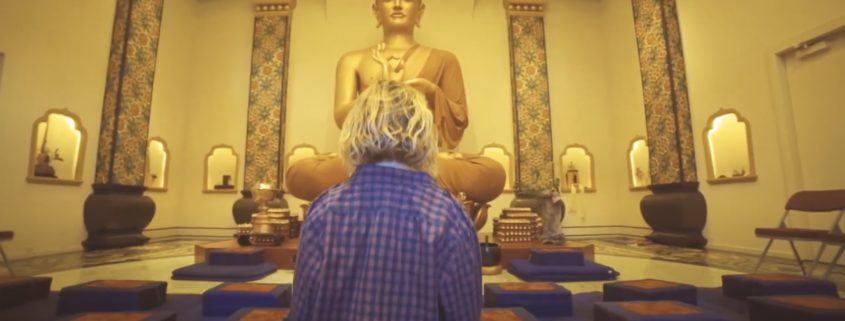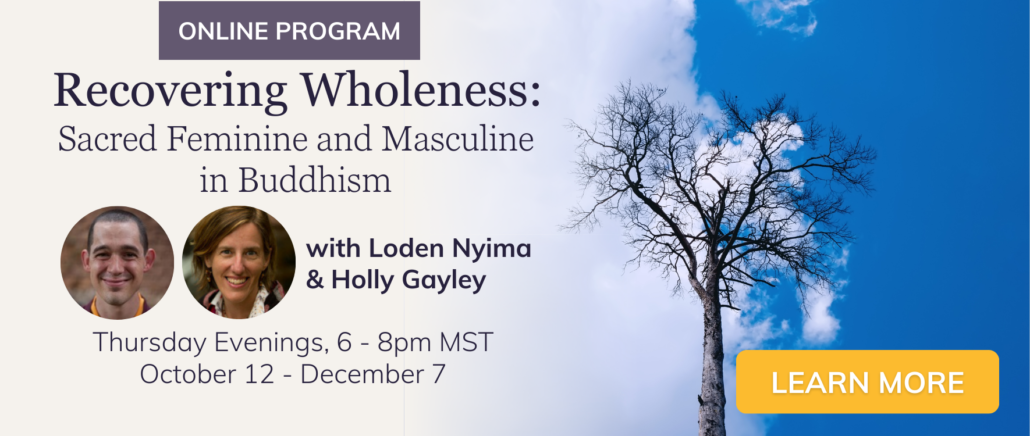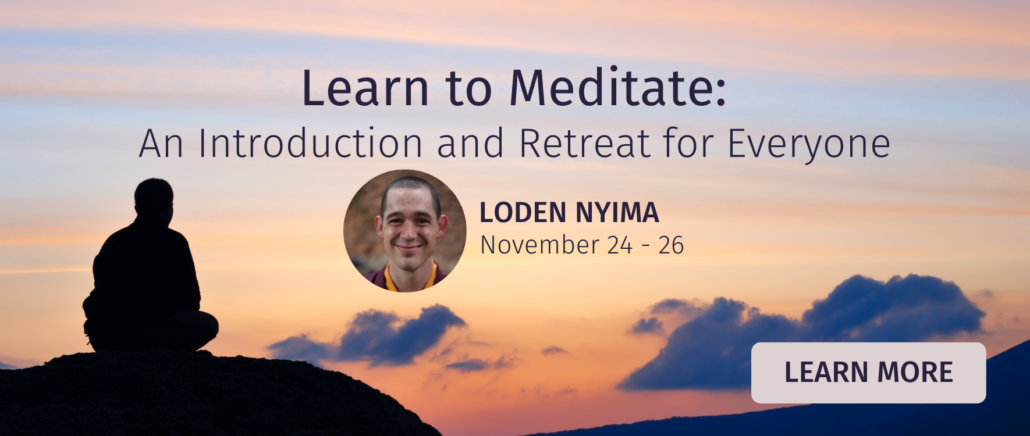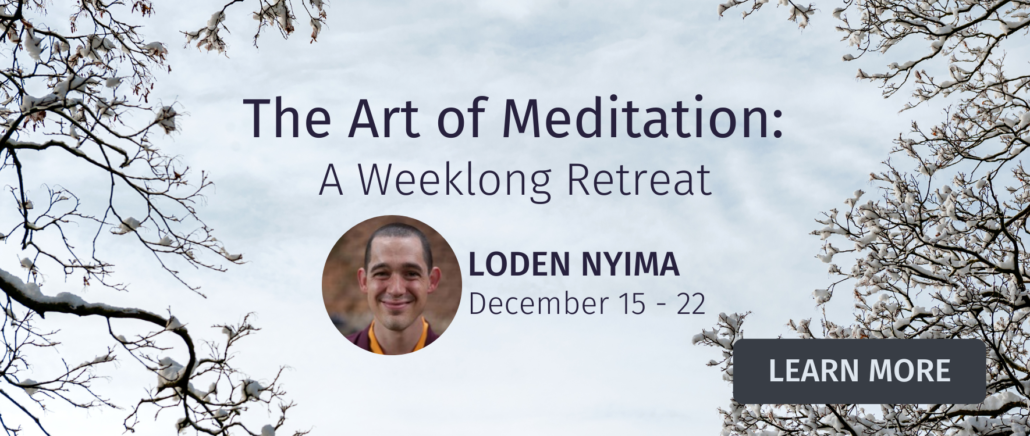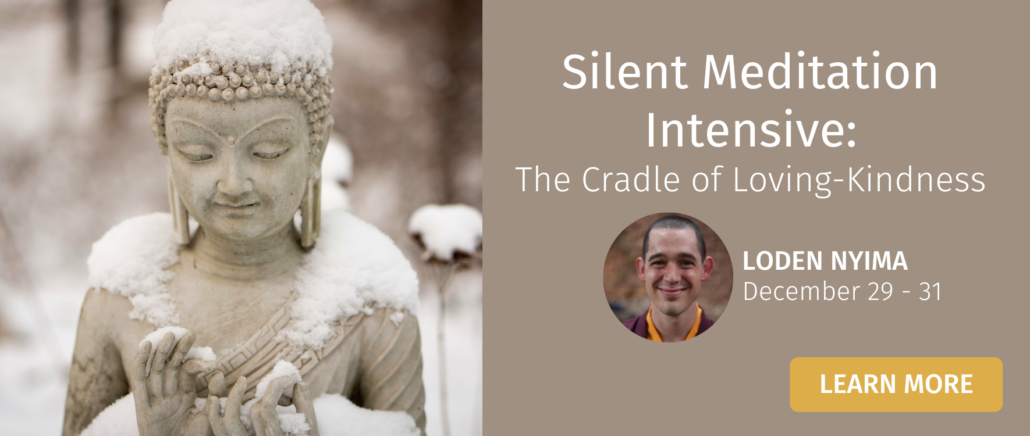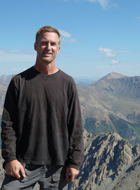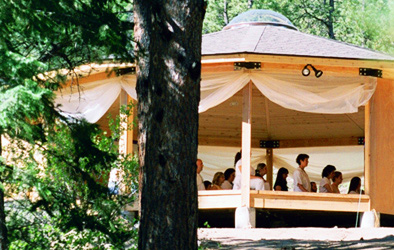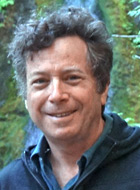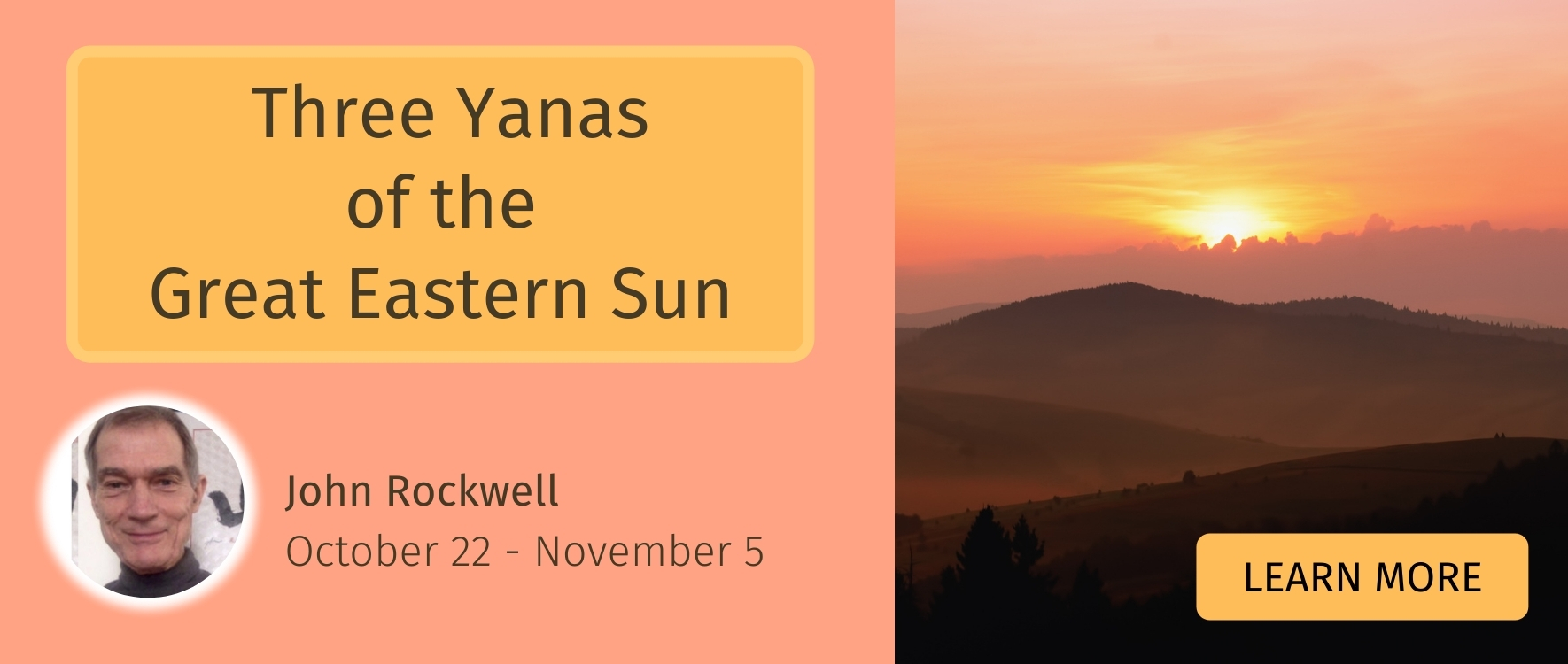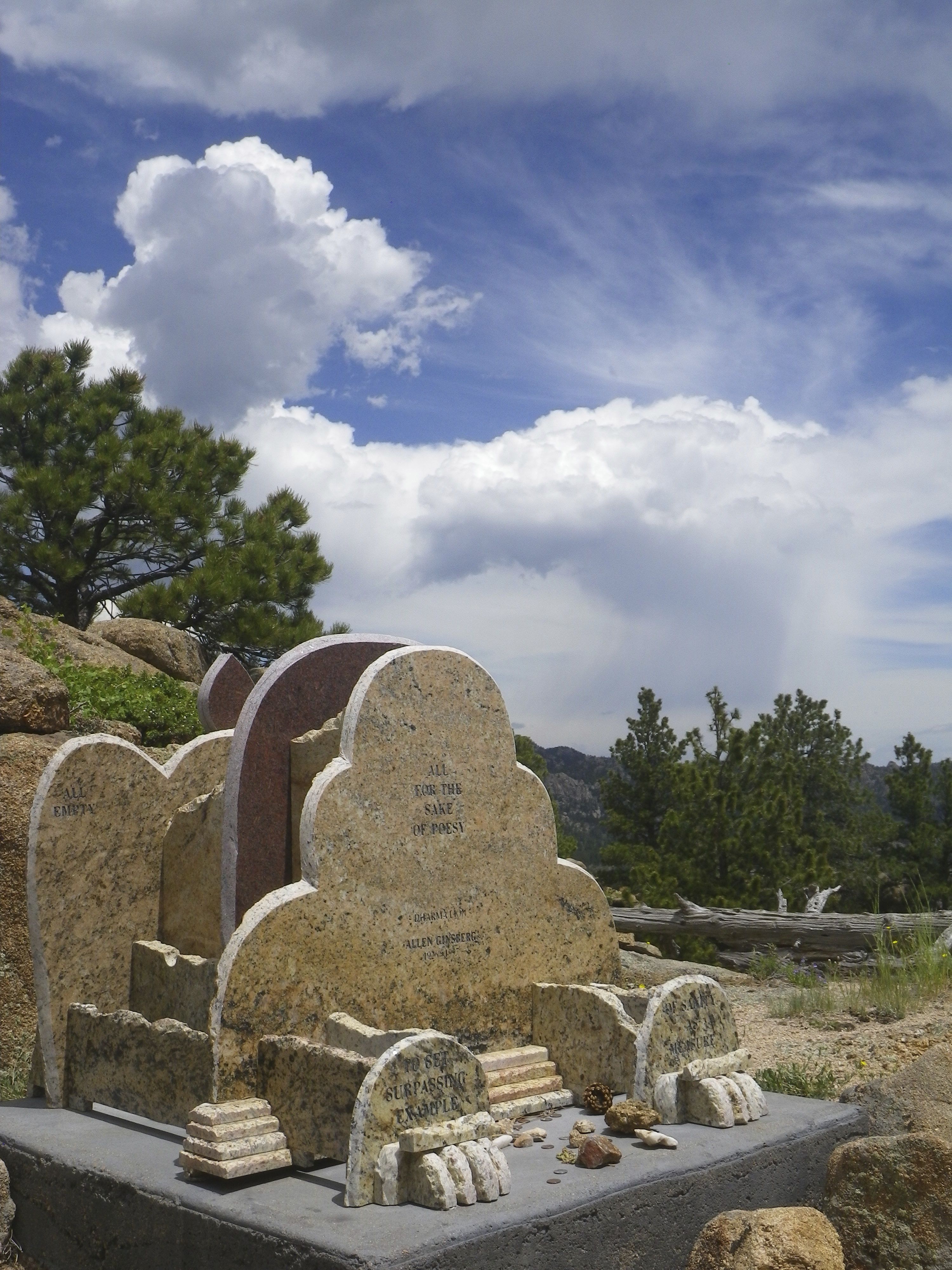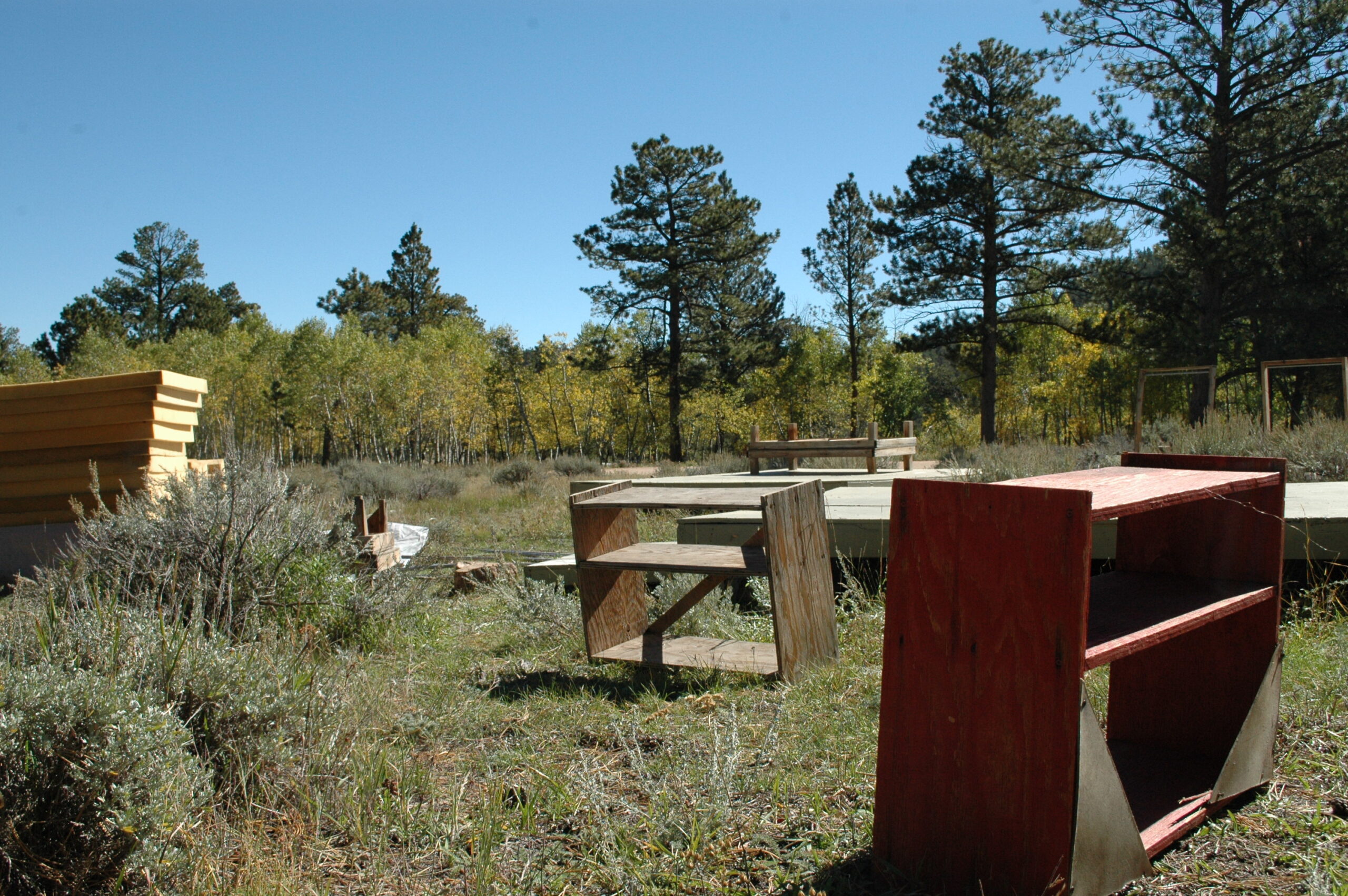Speaking of Silence
by: Loden Nyima, Resident Teacher at DMC
Healing in Space and Stillness
When I lead silent meditation retreats, I often begin with a somewhat cynical joke. I ask, “OK, let’s have a show of hands, how many people here feel like we can keep up with everything in our lives, process all the information we receive in a day completely, give as much time and care to all of our interactions and relationships as they need, thoughtfully attend to all of our work and tasks with no rush whatsoever, take as much time as we need for self-care and health, relax at the end of the day with not a care in our minds, sleep as much as we need, then wake up the next day refreshed and ready to go?”…at this point usually we’re all chuckling and shaking our heads in empathetic commiseration and the kind of relief that comes from being able to laugh in authentic connection with others.
That said, it’s no joke. From a meditative point of view, our spiritual energy or pranna is part of and similar to what we know in Western science to be our nervous system, and more. Every time our mind does something, like taking in information, thinking about things, responding to things—literally any activity whatsoever—our mind and body engage, our pranna moves, and we use energy. While I’m a big fan of technology (and am using it now!), it’s also my own view that the pace of life and business we’re currently attempting to live in the mainstream USA simply exceeds what we’re physically, emotionally, and spiritually capable of in a healthy way.
To put it simply: our technology has outpaced our biology.
For many of us, this can leave us feeling exhausted, overwhelmed, numb, anxious, depressed, and so much more. It can make it hard to connect emotionally with ourselves and others, hard to focus, and can even cause physical health issues like insomnia, unexplainable malaise, and more. This is a healthy response to an unhealthy situation, and there’s an incredibly helpful, easy, and natural medicine we can offer ourselves: space, silence, and stillness.
Silence—meaning not talking with others, texting, keeping up with apps and news, etc—has been a support for meditation practice for millennia. As we take in less, do less, we can be more. We can allow our minds and bodies, our pranna, to settle and to relax. It’s a bit like a detox in a certain way, learning how healthy and natural we actually are.
The next thing I do when I lead silent meditation retreats is to go around in a circle and ask everyone to speak a bit about why they came. Almost universally, there’s some desire for healing, rejuvenation, renewal, rest, and depth of spiritual practice. I encourage people to trust exactly that part of ourselves which is seeking those things—-that’s our innate wisdom, compassion, sanity, and health shining through! It’s our longing to come home, to rest, to return to our true nature. It’s like longing for like.
Our meditation practice itself is a process of coming home. It’s a process of embracing ourselves and our experience exactly as we are—being willing to feel whatever we feel, be it pleasure or pain, and to simply breathe and remain present with it all. It’s an act of profound friendliness to ourselves, and outrageous acceptance and trust. In the process, we can self-heal and self-rejuvenate whatever unprocessed emotional material is in our minds and bodies, and ultimately learn to rest. Then we can engage in life from that place of well-being, and be all the more available to others.
I’ve written a bit more about the meditative process in other articles. But for now, silent retreat is a powerful support. It relieves us from keeping up with the pace and demands of life, and lets us settle down and come home to ourselves. It can also amplify whatever is going on in our own minds (because what else is there!?) and in that way can be an extension of the invitation for acceptance, friendliness, feeling, and trust.
I often end silent meditation retreats with another joke. I look around the room at these beaming, lighter, healthier-looking people and say “you know, you could have done that at home”. But what we often don’t have at home is each other, and the incredibly moving support and bond that can come from a circle of people sitting together in a mountain valley meditating. We’ve been doing that for thousands of years. It’s survived because it works. And of course, we often simply don’t have the time and space for that to happen. That’s why retreat centers exist, even if the whole path and result is already within our hearts. Otherwise, why are we reading this?
Join Loden Nyima for these upcoming programs:
Read Next: Daily Practice: Our Reservior of Sanity
About the Author: Loden Nyima


